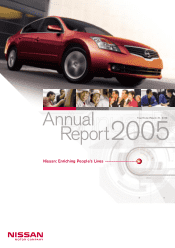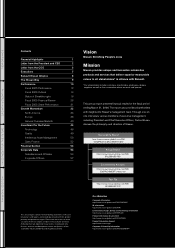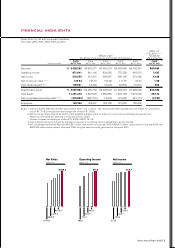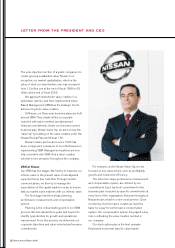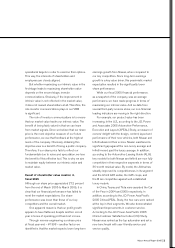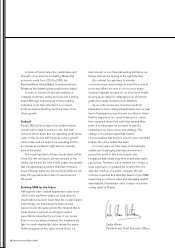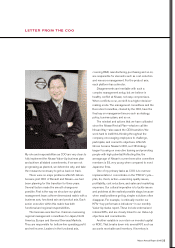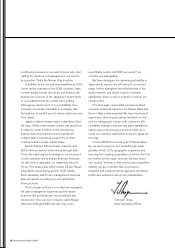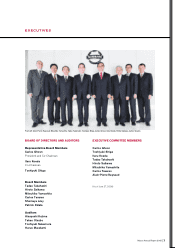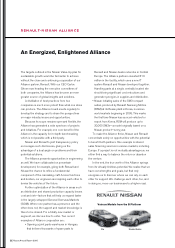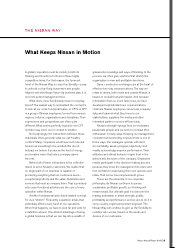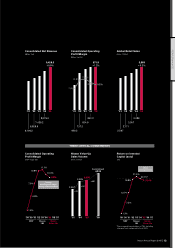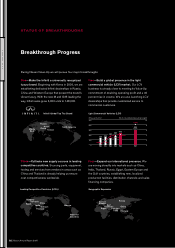Nissan 2006 Annual Report Download - page 8
Download and view the complete annual report
Please find page 8 of the 2006 Nissan annual report below. You can navigate through the pages in the report by either clicking on the pages listed below, or by using the keyword search tool below to find specific information within the annual report.
Nissan Annual Report 2005
6
overflowing somewhere, we want to know why. Just
waiting for results is not management—we need to
be proactive. That’s the Nissan Way in action.
In addition to my role and responsibilities as COO,
I serve as the chairman of the GOM countries. I also
oversee quality, human resources, and treasury. My
priority now, however, is the Japanese market. None
of us is satisfied with the results we’re getting.
Although we derive much of our profitability from
overseas, we remain vulnerable to exchange rate
fluctuations, so we still need to deliver solid revenues
from Japan.
Japan’s market remains highly competitive. Since
the early 1990s, total industry volume has gone from
8 million to under 6 million. In this diminishing
market, many manufacturers have maintained
multiple sales channels as a way to try to retain
customers and increase market share.
Nissan had two different sales channels until
2005. Now we sell our entire lineup through both.
This is the right long-term strategy for us, because it
is both customer-driven and profit-driven. However,
we still need to rationalize our dealership network.
Of our 150 dealers and 2500 outlets, 52 are Nissan
subsidiaries representing around 1200 outlets.
Each subsidiary had its own management, business
plan and assets, including non-core assets like
driving schools.
This is clearly inefficient, so in April we separated
the asset management business and the dealer
business. We put all assets—land, buildings and
showrooms—into one new company called Nissan
Network Holdings (NNH). We will close some
unprofitable outlets, but NNH can invest if we
consider one salvageable.
My three strategies for improving profitability in
Japan are to improve the efficiency of our product
range, further strengthen the effectiveness of the
dealer network, and deliver superior customer
satisfaction. Given a choice of profit or volume, we
choose profit.
Providing agile, responsible, and personalized
customer treatment, based on the Nissan Sales and
Service Way, is also essential. We have hundreds of
supervisors observing and giving feedback on how
well our salespeople interact with customers. We
constantly evaluate customer and sales satisfaction
indices and conduct surveys at every outlet. As a
result, our customer satisfaction scores in Japan are
very high.
In fiscal 2006, the second year of Nissan Value-
Up, we are focusing on four breakthrough areas
globally: Infiniti, LCVs, geographic expansion, and
sourcing from leading competitive countries. The first
six months will be tough, since we will have fewer
new models. Yet even in this enormously competitive
industry, we are confident that our products,
discipline and customer-driven approach will deliver
profits and sustained value to our shareholders.
Toshiyuki Shiga
Chief Operating Officer

